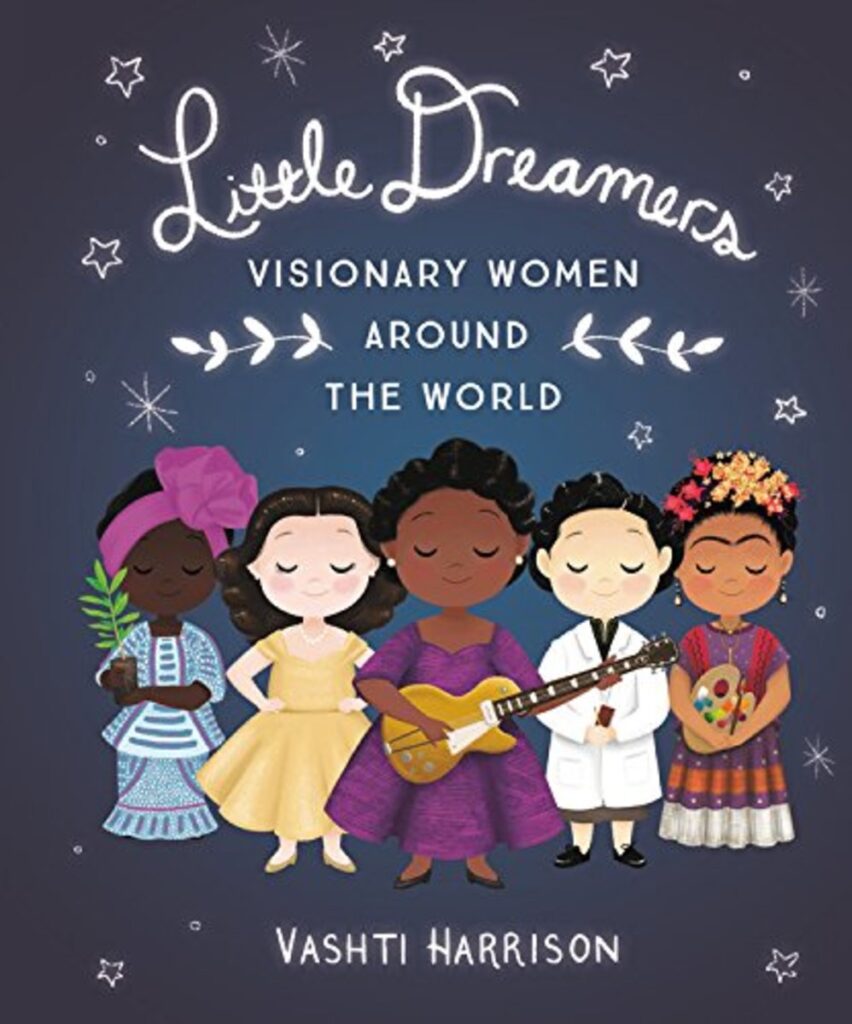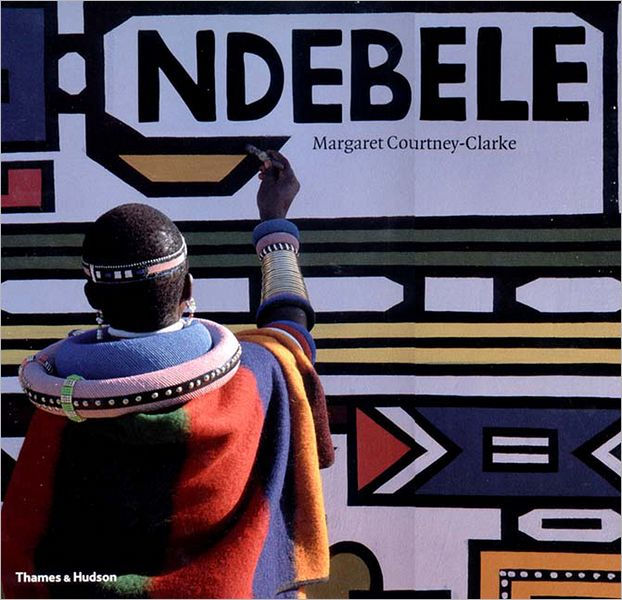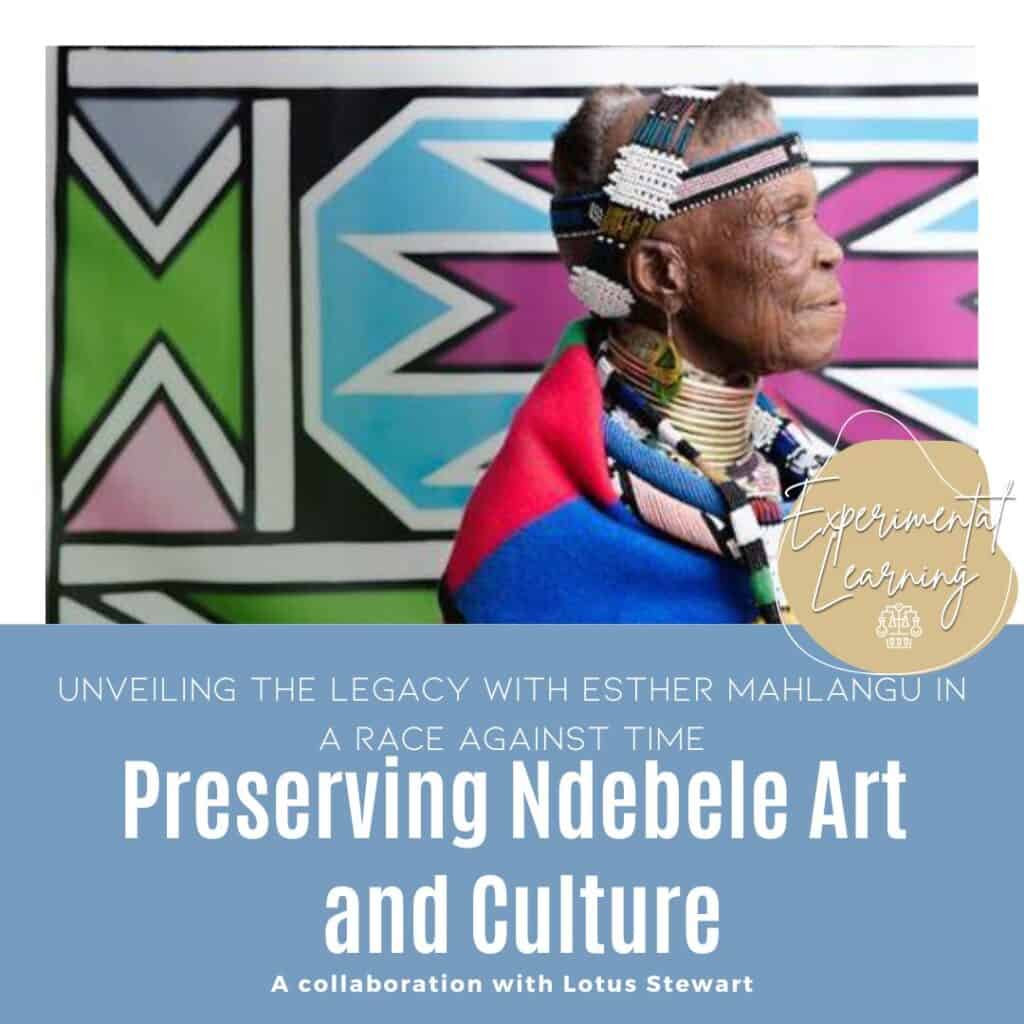We are excited to have you join us on this blog as we work to preserve the Ndebele people’s vibrant artistic and cultural heritage. Our goal in creating this digital map three years ago was to provide a fun and engaging approach for young people in South Africa to learn about and appreciate their indigenous history. We had no idea that our journey would take us into the fascinating realm of the Ndebele culture, a group whose people occupy a particular place in the heart of one of our own, Lunga.
As he was developing into a young man, Lunga’s grandmother Nomakuwa not only acted as his guardian but also instructed him in the nuances of the Ndebele culture. Our team, led by Lunga, set out to create a special edition in honor of Nomakuwa that would capture the spirit of her native culture. It was a touching and meaningful moment when Nomakuwa confided in Lunga about the rituals and rites of passage for young women in her culture, as well as the tasty foods they enjoy and the colorful garments they wear.
We made it our mission to record these priceless moments so that future generations of Ndebele might benefit from their rich cultural heritage. We set out to capture the essence of Ndebele culture using cameras, diaries, and dogged tenacity. And now we have the honor of presenting our findings to you.
This is from our visit to kwaMlhaga to visit the Kghodwana Cultural Village.



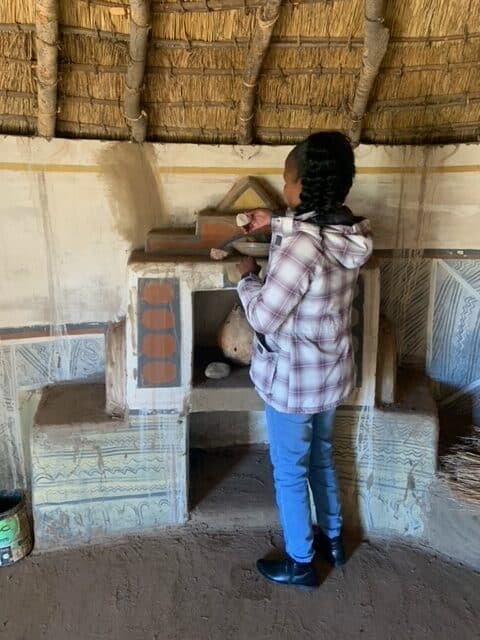
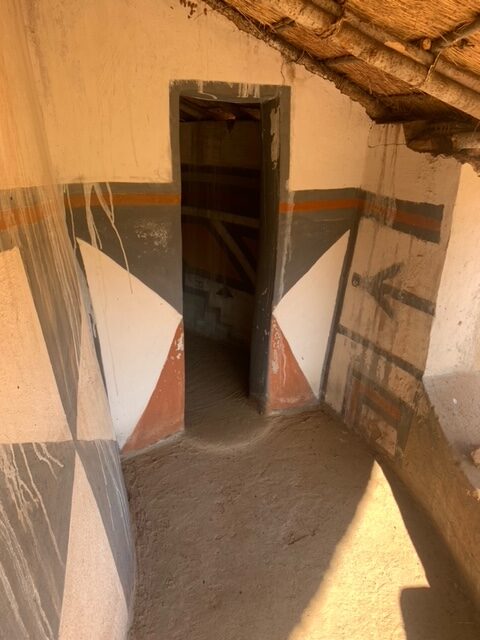
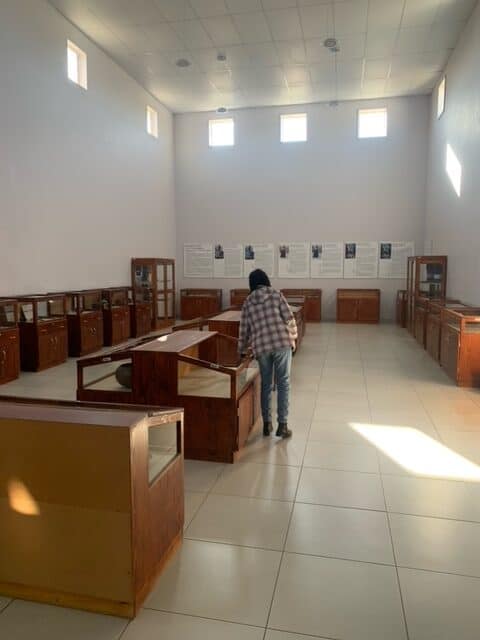
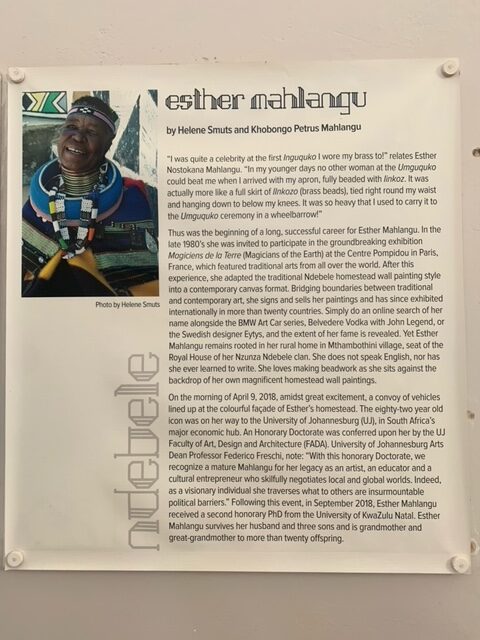
Join us as we explore the awe-inspiring art and attire of the Ndebele culture, one of the most distinctive in all of South Africa. We’ll take you on a fascinating adventure to learn the significance of the designs they paint on their walls and themselves. Our hope is that the combination of beautiful imagery and informative narrative will pique your interest and increase your respect for this remarkable cultural tradition.
Let us get together to honor the Ndebele and their invaluable contributions to South Africa’s cultural fabric. Come celebrate with us as we remember Lunga’s grandma Nomakuwa and all the people who have gone before us and shared their knowledge and customs with us. Our goal with this blog is to bridge the generation gap by encouraging readers to learn about and appreciate the rich cultural traditions of the Ndebele people.
Prepare to be amazed as we explore the hidden meanings of Ndebele textiles and apparel and pay tribute to the fascinating rituals that characterize this thriving culture. Join me as I immerse myself in the fascinating culture of the Ndebele people!
Why Ndebele art and clothing are important
Looking at what makes Ndebele art unique and what it means
Ndebele art is a beautiful and unique way of expressing art that has a lot of traditional meaning. Ndebele art tells a story about history, identity, and society through its bright colors, geometric patterns, and detailed designs. Each brushstroke and carefully put line has a deep meaning that reflects the past, beliefs, and hopes of the Ndebele people.
Patterns in Ndebele art that are strong and striking are not just for looks; they have deep meanings. They are a kind of visual language that sends important messages about national values, social standing, and ties to the past. Every part of Ndebele art tells a story that goes back generations, from the zigzag patterns that represent the snake and stand for defense and fertility to the triangle patterns that stand for the female body and fertility.
Figuring out what role clothes play in Ndebele culture
Clothing is another important part of Ndebele culture that shows off the community’s creativity and sense of self. Traditional Ndebele clothing is a feast for the eyes with its bright colors, elaborate beading, and bold geometric patterns. Especially for Ndebele women, the clothes they wear are a strong way to show their ethnic pride and individuality.
Every piece of clothing, from the beaded neck rings to the finely decorated aprons to the carefully made headdresses, has a deep societal meaning. Not only do these clothes show off the beauty and skill of the Ndebele artists, but they also help people identify themselves and keep in touch with their ancestors’ practices. Ndebele clothing shows how strong and creative the people are. It also helps to keep their cultural history alive and pass it on from one family to the next.
By learning more about what makes Ndebele art unique and how clothing is used in Ndebele culture, we can better understand the complex and important ways this unique community expresses itself. Join us as we find out the stories behind the bright colors, figure out what the geometric patterns mean, and celebrate the artistic history of the Ndebele people.
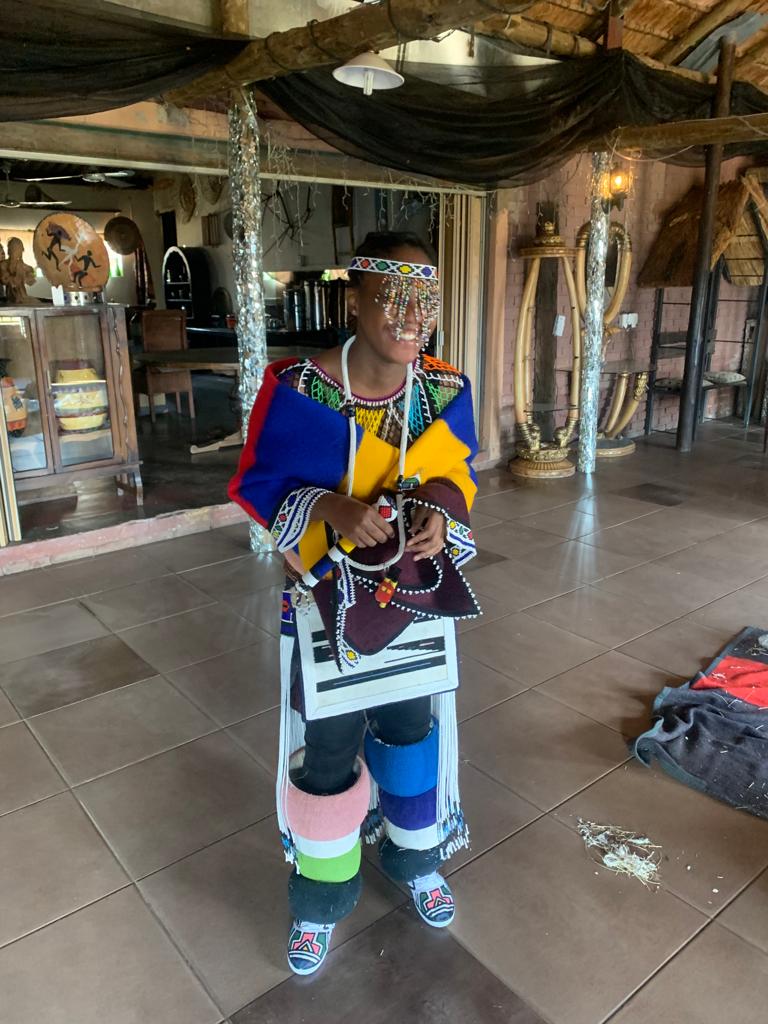
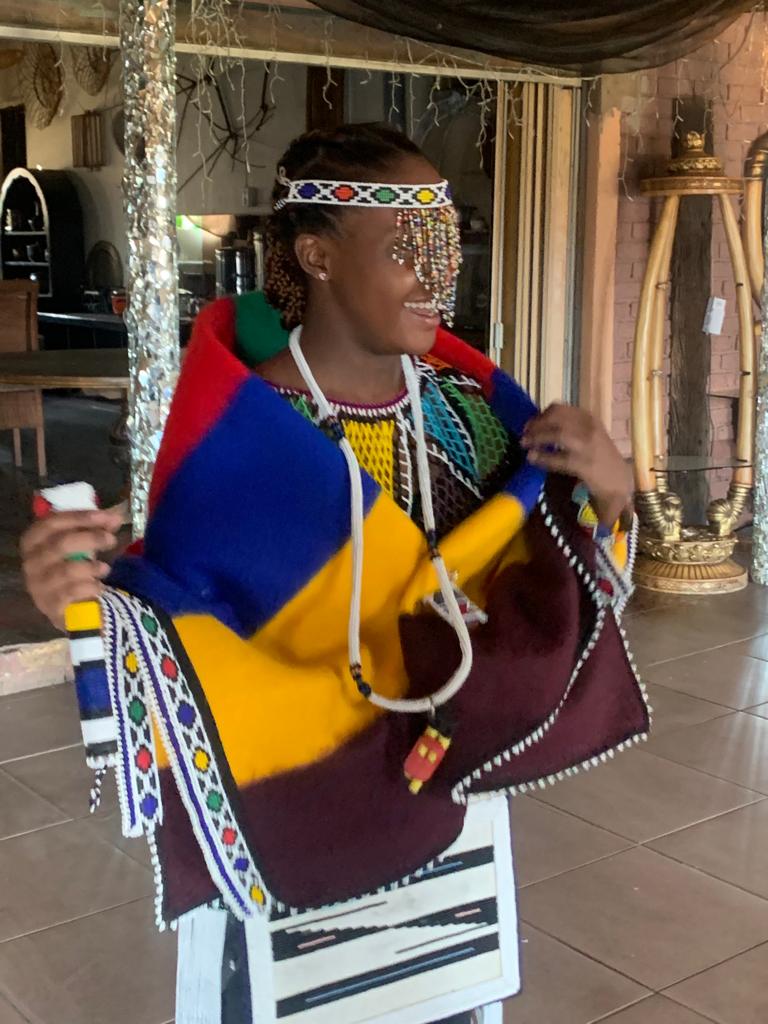
Revealing the Ndebele women’s traditions
Learning about different rites and traditions for coming of age
In the rich fabric of Ndebele culture, the customs and traditions that involve Ndebele women have a special place. Traditions like these mark the change from a girl to a woman and help define who Ndebele women are and what their roles are in their community.
The coming-of-age traditions that young Ndebele girls go through to prepare them for their future roles as wives and moms are one of the most interesting things about their culture. There is a lot of symbolism in these practices, and they mean a lot to the people who do them. They teach about marriage, having children, and how important group ties are.
Ndebele girls learn the customs, values, and responsibilities that will guide them for the rest of their lives through the complex events and initiation rites. These customs not only give people a sense of national pride and connection, but they also help keep the Ndebele community strong and united.

Honoring the Ndebele women’s strength and creativity
Women in the Ndebele community keep the culture alive by passing on their knowledge, skills, and customs to the next generation. Their artistic skills, such as embroidery, pottery, and wall painting, show how creative they are.
Women from the Ndebele tribe are known for their beautiful and detailed embroidery. Each bead that is carefully strung onto chains, bracelets, and belts shows how creative and careful they are. These pieces of beading are worn by the women, but they also show who they are and what their standing is in the community.
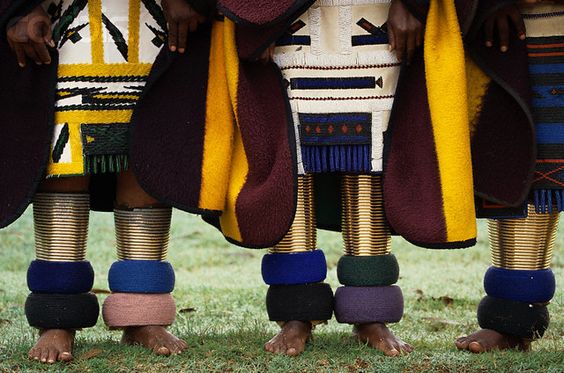
Ndebele women are also known for how well they can make murals. Using a traditional method called “ukugwala,” they paint beautiful geometric shapes in bright colors on the walls of their homes. Not only do these paintings make the community look nicer, but they also send messages of national pride, unity, and safety.
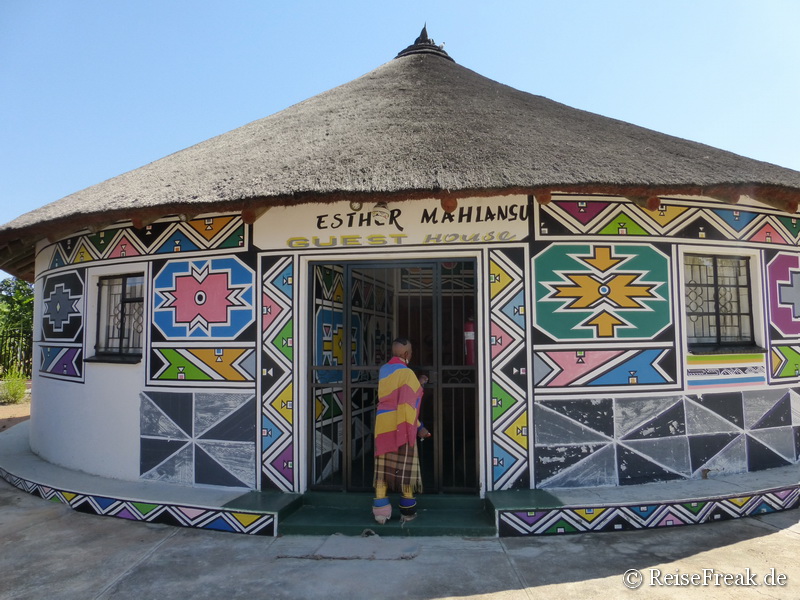
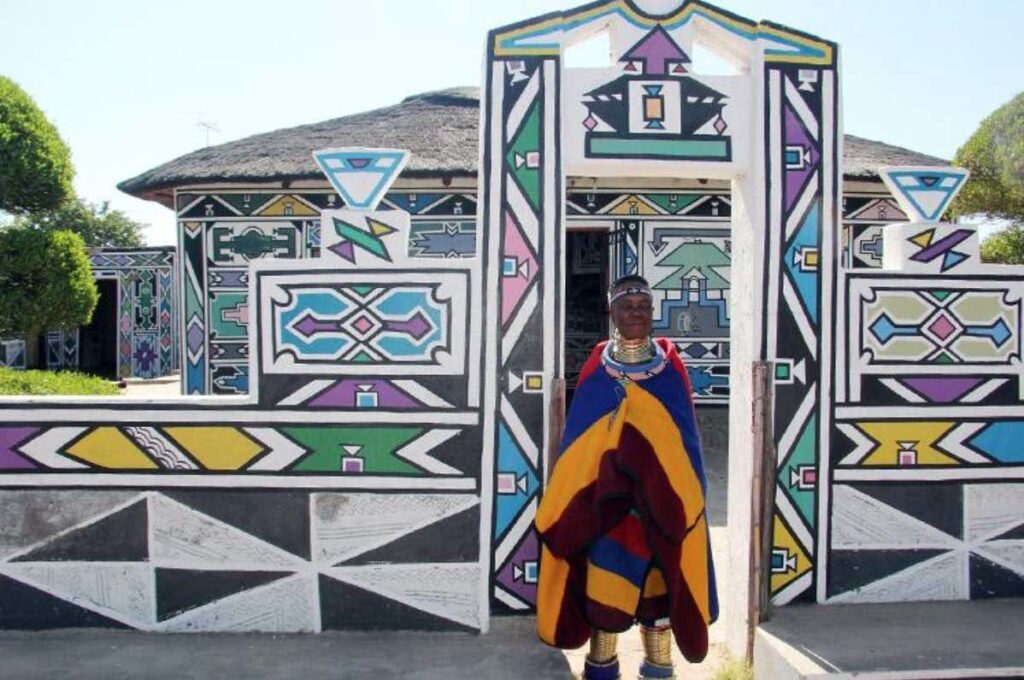
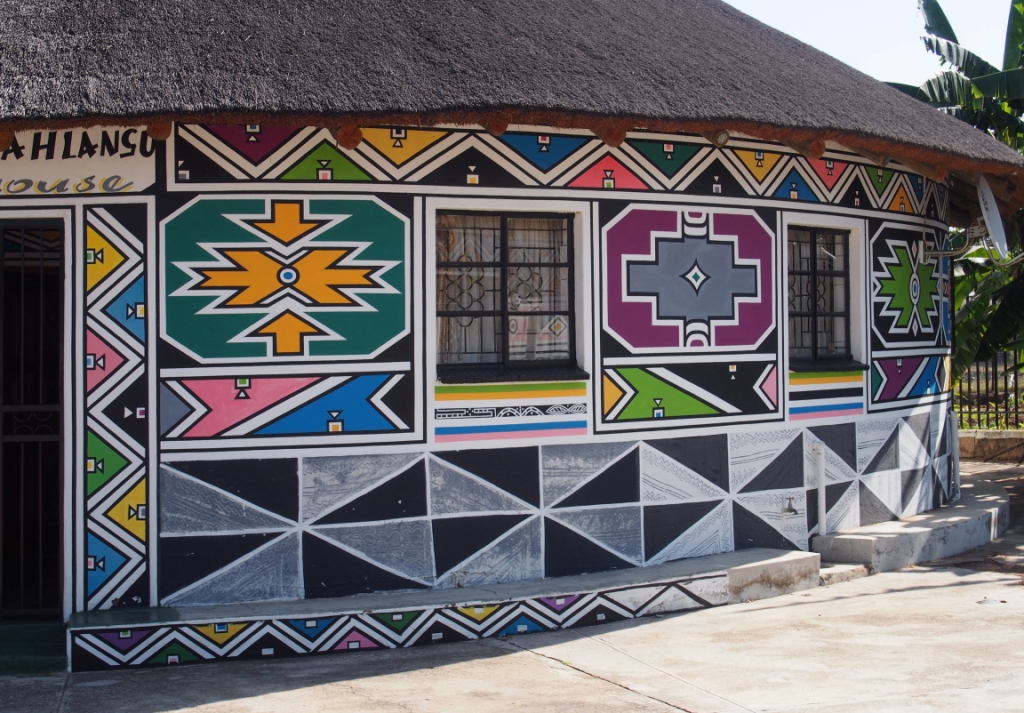
When we celebrate the strength and creativity of Ndebele women, we honor their important roles in keeping the Ndebele culture alive and growing. Join us as we learn more about the unique ways of the Ndebele women. We’ll learn about their amazing strength and how their art has stood the test of time.
The Disappearing Heritage: Difficulties in Keeping Ndebele Culture
The rich culture of the Ndebele people is hard to keep alive because cultural places and landmarks that used to be full of Ndebele practices are disappearing. Esther Mahlangu was born in Middelburg, which is in the province of Mpumalanga. These sacred places, which were once home to culture towns like Botshabelo, have been abandoned because of land claims. This means that an important part of Ndebele history and traditions has been lost. Also, a terrible fire burned the Ndlovu Art and Craft Center, which was an important part of spreading Ndebele art and helping local artists. Even more than before, these bad things show how important it is to record and keep the remaining pieces of Ndebele traditional history.
We know it’s important to deal with these problems as part of our efforts to record and protect the live past of the Ndebele people. The fact that young people don’t know much about their own traditions is a big problem, because the fast-paced modern world doesn’t always value the knowledge and habits of older people. Also, it’s hard to keep Ndebele culture alive because some older people don’t want to share their knowledge, sometimes because their culture is changing or because they’re afraid of losing their history.
Through our blog, we want to put light on these problems, bring attention to the disappearing cultural sites, and stress how important it is to keep the Ndebele tradition alive before it is lost forever. Join us as we learn more about how hard it is to keep Ndebele culture alive and look for ways to make sure that this rich mix of traditions and art will still be around for future generations.
Taking Pictures of History in the Making: Our Trip with Nomakuwa and Esther
Nomakuwa, the grandmother of one of our team members, Lunga, and the well-known Ndebele artist Esther Mahlangu have helped us a lot on our journey to preserve the live past of the Ndebele people. Nomakuwa has been a great source of information, sharing not only the beliefs and stories of the Ndebele people but also their close relationship with nature. She taught Lunga about local plants and how they can heal, and she showed him which herbs to use for different diseases.
On one occasion, Lunga got a sore throat as we were driving back from the Melrose Gallery, where we were excited to see Esther Mahlangu’s beautiful art. He turned right away to what his grandma had taught him. Lunga knew that the native plants that Nomakuwa grew in his yard were powerful, so he went straight to get some relief by gathering the right herbs. This real-life experience showed how the Ndebele community’s live customs and practical knowledge have been passed down from generation to generation.
Our meetings with Esther Mahlangu, a live Ndebele art hero, have been just as powerful. Her beautiful works of art, with their hypnotic designs and bright colors, are not only great examples of art, but also important pieces of cultural history. Esther’s art is a reminder of the rich artistic traditions of the Ndebele people. It shows how important it is to keep and share these traditions.
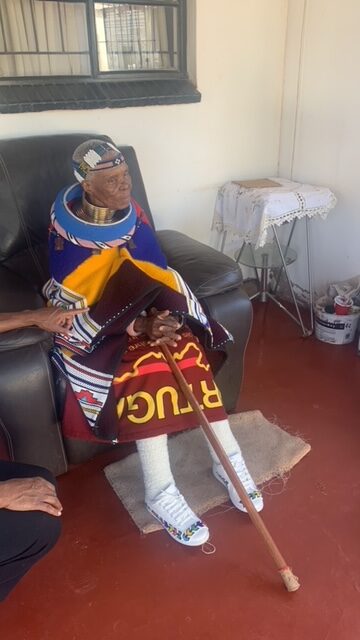
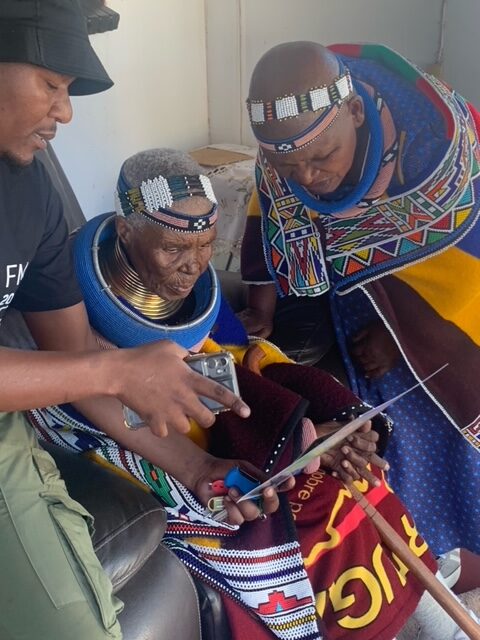
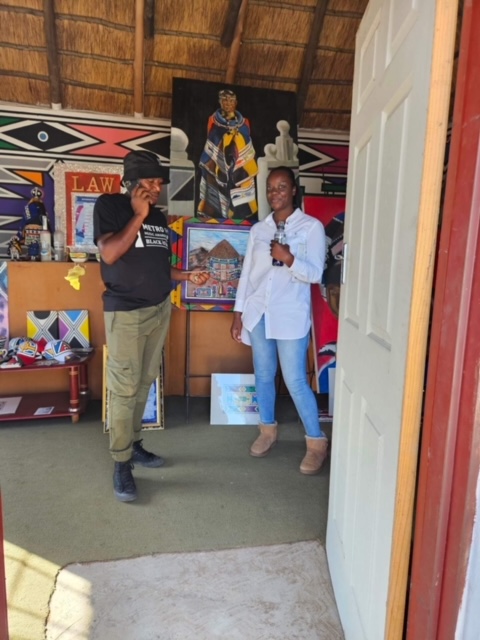
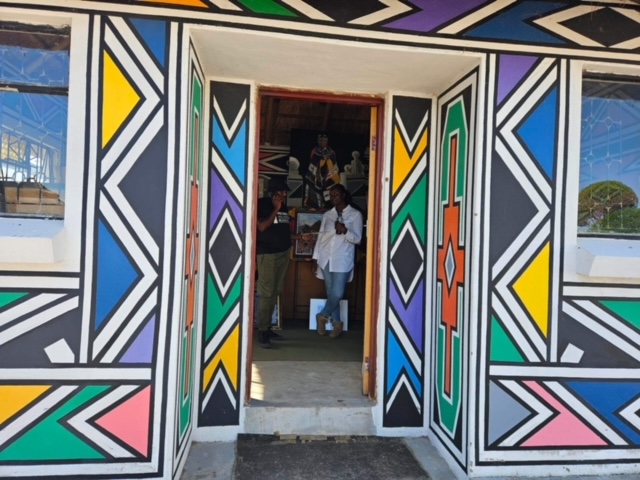

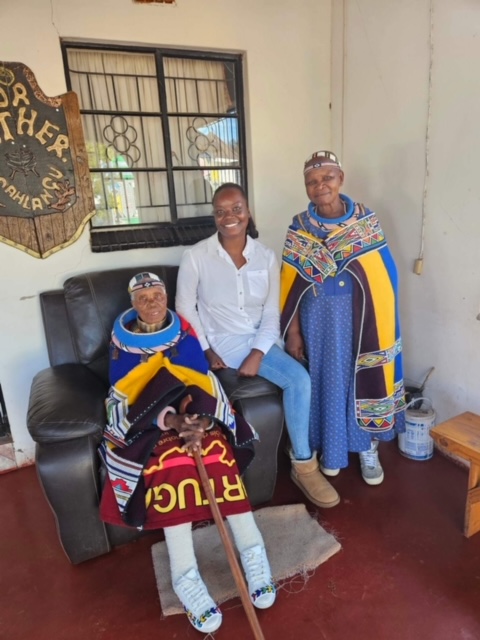
Through our meetings with Nomakuwa and Esther, we have seen directly how the Ndebele community is strong and deeply connected to its past. Their knowledge, talent, and steadfast dedication to keeping their cultural identity alive motivate us to record and share their stories so that the important lessons they teach can be passed on to future generations.
The Digital Map: Connecting Youth to Ndebele Heritage and Our Work with Lotus Stewart
We started a big project three years ago as part of our hard work to connect the present with the Ndebele people’s history, which is being lost. Our goal was to make a digital map that would help young people connect with South Africa’s original culture, especially the lively Ndebele culture.
We put together a series of interactive historical letters by doing a lot of study and collecting historical facts about the Ndebele culture, leaders, customs, and the plants and animals that were important to their way of life. These letters were written to be interesting and engaging, using digital tools like YouTube and online resources to help readers understand and be more interested.
As part of our work together, we’re excited to give these interactive history letters to the over 300 people who are active in Lotus Stewart’s online community. Lotus is a creative person who is very interested in art history and works hard to include Black and Brown artists in the story of great artists. She brings her own unique viewpoint and experience to our project.
We learn about Ndebele art together by working with Lotus Stewart and her community. We look at its complicated patterns, bright colors, and deep cultural meaning. By giving Lotus’ community our interactive historical letters, we hope to make Ndebele history more well-known and spread a sense of acceptance and respect for the artistic contributions of Black and brown communities.
Through this partnership, we want to ask young people and art lovers to join us on an amazing trip of discovery as we learn about the Ndebele people’s history and stories. Together with Lotus Stewart and her community of 300 families, we enjoy the beauty, creativity, and historical value of Ndebele art, making sure it gets the attention it deserves in the wider art world.

Keeping history alive: recording the knowledge of Ndebele elders and Esther Mahlangu
As we learn more about Ndebele art and culture, we realize how important it is to record the live history and wisdom of Ndebele elders to make sure that their useful knowledge is kept for future generations. During our trip, we had the chance to talk with respected Ndebele elders and the well-known artist Esther Mahlangu. Their insights helped us understand Ndebele customs better.
Through deep talks with Ndebele elders, we’ve learned about their practices, customs, and lessons that have been passed down from generation to generation. Their knowledge includes a deep understanding of the meanings behind the symbols in Ndebele art, the spiritual meanings of certain patterns, and how art relates to daily life. Because of their stories and experiences, we now understand that Ndebele art is full of complex details and references to the past.
Esther Mahlangu, who is a true star of Ndebele art, has been kind enough to tell us about her amazing story and how she makes her art. Esther was born in Middelburg. Her artistic skills have made her famous all over the world, but she stays true to her Ndebele roots. Her colorful works of art beautifully capture the spirit and soul of Ndebele culture, showing how custom and modern art can work together.
In our talks with Esther, we learned a lot about what inspires her art, how deeply she is connected to Ndebele meaning, and how hard it has been for her to protect and promote Ndebele art around the world. Esther’s love for her craft and commitment to keeping Ndebele traditions alive have left a lasting mark on our project. They have inspired us to respect the history of Ndebele art and bring attention to its importance in the larger art world.
We work with Ndebele leaders and Esther Mahlangu to make sure that their knowledge and experiences are honored and shared with the rest of the world. We want to make a lasting tribute to the Ndebele people and their rich cultural history by writing down their stories, recording their thoughts, and keeping their art.
Join us as we set out on this journey to keep history alive, honor the knowledge of Ndebele elders, and honor the art of Esther Mahlangu. Together, let’s love and protect the Ndebele culture’s rich fabric, making sure that future generations can accept and understand the deep beauty and meaning of Ndebele art.
Additional resources:

